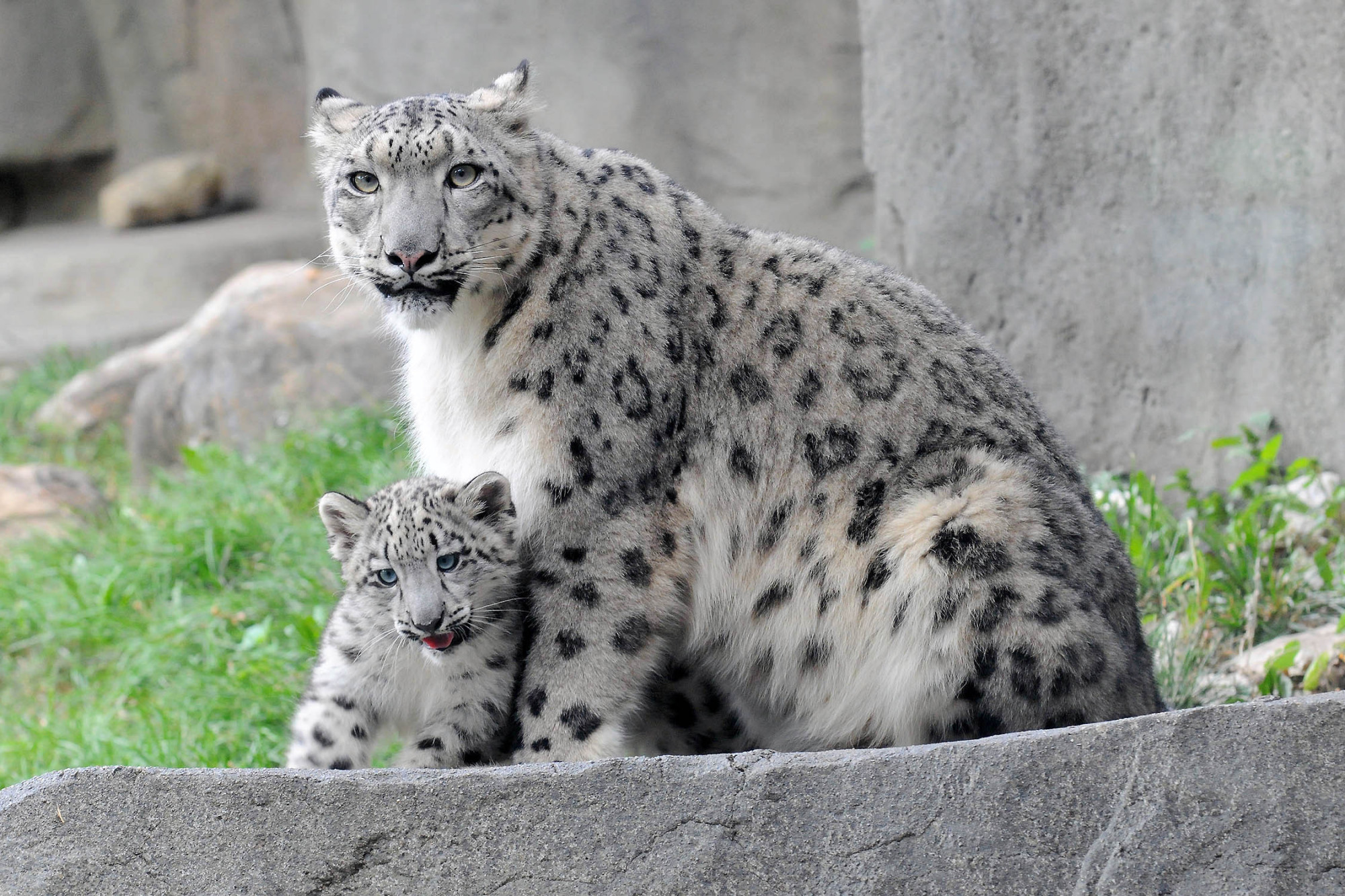
Snow leopards have the longest and thickest fur of any of the big cats which helps to keep them warm during the brutally cold winters, and they use their long tails to wrap around themselves like a muffler.

The snow leopard’s large paws, which act like snow shoes, measure about 4 inches long by 3 inches wide (10 x 8 cm). As far as their proportions, they resemble a cheetah in that they have long hind limbs, which gives them a longer stride and faster running speeds. Snow leopards weigh between 55 and 115 pounds (25-52 kg). It acts as a rudder as they run up and down steep rocky slopes and leap from rock to rock. Their tail, which is the longest of any felid when compared to their body size, measures 32-40 inches (80-100 cm). From their nose to the base of their tail, they measure about 39-51 inches (100-130 cm). Photo: Steve Tracy Snow leopards are the smallest of the big cats. So, now, the snow leopard is known as Panthera uncia. The two species split apart about 2 million years ago.

However, recent phylogenetic or evolutionary analyses that are based on similarities and differences in physical or genetic characteristics do place the snow leopard within the genus Panthera, being most closely related to the tiger Panthera tigris. They weren’t originally placed in the genus Panthera that’s made up of the tiger, lion, jaguar, and leopard because of their inability to roar due to differences in their anatomical structure. At this point, classifying the snow leopard becomes more difficult. And snow leopards are placed in the Family Felidae who we commonly call cats. They are then placed in the Order Carnivora because they only eat meat. They are further placed in the Class Mammalia because they have fur as all mammals have either hair or fur, and they nurse their young. They are placed in the Phylum Chordata because they have spinal cords unlike crabs or jellyfish, for instance. Taxonomists place the snow leopard in the Kingdom Animalia because they are animals, not plants or bacteria. Sometimes, as we will see, it isn’t easy. It’s a way of knowing who is related to whom. In other words, taxonomists try to group living things with other, similar, living things. Taxonomy is the orderly classification of plants and animals according to their presumed natural relationships. The scientists who think about what to call all living things have, themselves, been given a name. And in the languages of the countries where the snow leopard lives, they are known as xuě bào (Chinese), Barfani chita (Hindi, Urdu – Pakistan), shan (Ladakhi – India), heung chituwa (Nepali), ilbirs (Kyrgyz), irbis (Kazakh, Russian, Mongolian), sah, shen (Tibetan) chen (Bhutanese), and palang-i-berf (Dari – Afghanistan).

These days, among English speaking people, snow leopards are most commonly known as… snow leopards, but they have many other names – among them are léopard des neiges (French), Schneeleopard (German) and leopardo de las nieves (Spanish). In French the word became lonce which was altered over time to l’once because French speakers thought the “L” meant “the.” Eventually, the “L” fell off and the name became, simply, once and that became, in English, ounce. The name might come from Latin: luncea which means lynx. In a similar way, snow leopards were once known as ounce. Words change over time, and so the “n” slipped away and the two words slammed together. The word, “leopard” comes to us from two Greek words that mean leon pard or lion cat. Photo: Jak Wonderly Snow leopards have had a number of names since they first came to the attention of Europeans. One Health Project – Annapurna Conservation Area.Community Action in the Nepalese Himalaya.


 0 kommentar(er)
0 kommentar(er)
